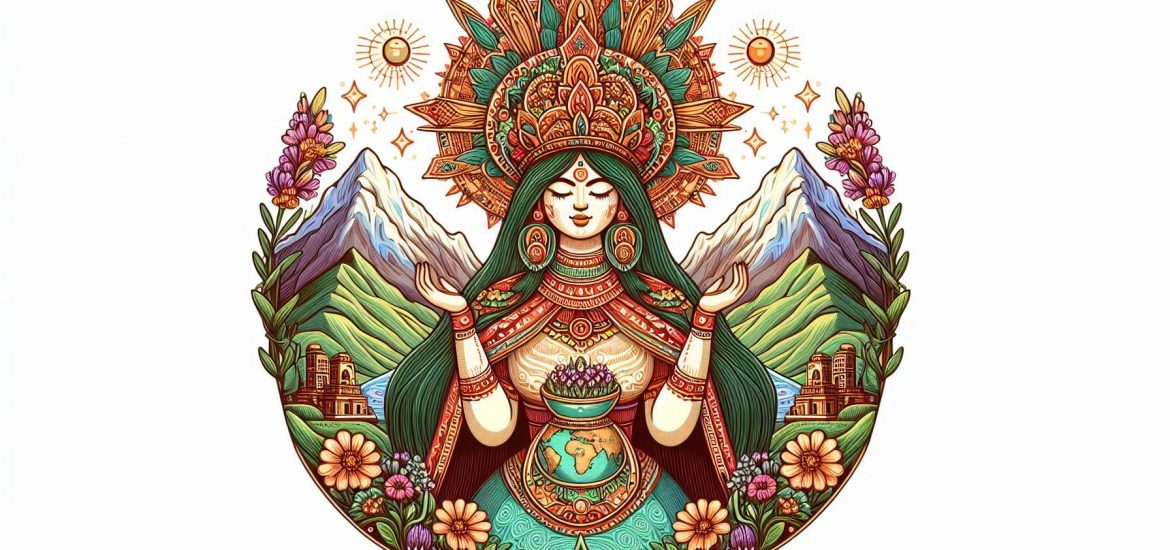Our ancient and ancestral country has an array of traditions and costumes still present in the current day, one of them is “ El dia de la Pachamama” celebrations that are held on the month of August 1st. Not only do the Peruvian Andean and Amazonian areas come alive, but also other countries in South America, when the bitter winter winds subside.
Bright festivities and comforting customs herald the arrival of spring. This month-long celebration is more than a custom; it’s a lovely opportunity for them to express their thanks and respect for the land that sustains them. This is a special occasion for people congregating in Peru, moving from rural highlands to thriving urban centers.
To honor Pachamama, they give flowers, chicha, and coca leaves asking for her blessings so they can have a successful year. Visit Peru in Pachamama’s Month if you want to travel or like different cultures. It’s your pass to the cultural and spiritual center of the Andes, come explore the traditions, rituals, and significance of this enchanted period with us, and discover how you can pay tribute to Pachamama’s eternal soul on the first days of August.
But.. What does “Pachamama” mean?
To comprehend the meaning of the Quechua word “Pachamama,” we must first separate it into its two components: “Mama,” which means mother, and “Pacha,” which means earth, time, globe, or universe. Thus, the meaning of “Mother Earth” or “Mother World” is what we obtain when we combine the two phrases.
“Pachamama” is considered a “mother” as she offers a home, food, and help to her “children” the inhabitants, so, you could think of Mother Earth, nature, and the life cycle as a kind of goddess. She represents the earth’s generosity and kindness, protecting her followers with their food.
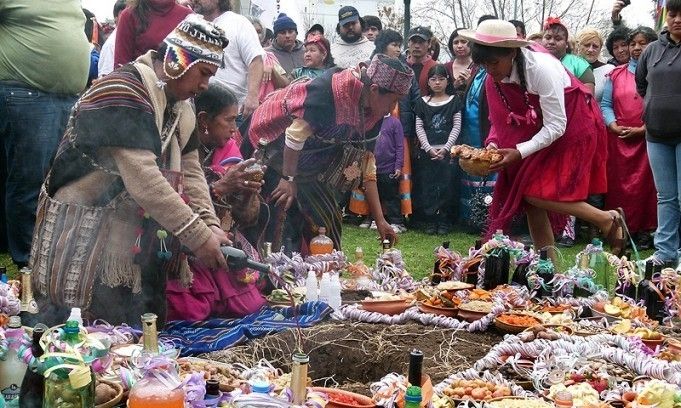
That’s why farming is usually linked to the idea of Mother Earth in the Andes. Even today, many people still believe in this goddess, although Catholicism has made some big changes, people in Andean peoples like Cusco still have faith and worship in their own way.
Pachamama Day is celebrated on August 1st due to its connection with the agricultural cycle and the Andean calendar. On this date, which coincides with the start of the agricultural year in many indigenous communities, an act of gratitude and renewal towards Mother Earth is performed.
Pachamama in the Inca Times
The Incas practiced a ‘pantheistic’ religion, which held that nature (mountains, valleys, rivers, lightning, thunder, etc.) and the creator God were actually the same thing. Since the Incas couldn’t have a writing system, most of the customs and tales have been passed down orally through the generations.
The belief in a single entity representing both God and nature was held by the Incas and the pre-Inca civilizations, and even ethnic groups living in the jungle. The Incas were aware of this, and it was one of the main reasons they were successful in establishing this kind of thinking across their empire.
For the Incas, pleasing Pachamama, the Earth Mother goddess, was crucial. They used to perform “El Pago a la Tierra” or in English payment to the earth, which implies rituals, offering coca leaves, chicha beer, and “huayruro,” a red seed with black spots used to prevent earthquakes. However, gaining Pachamama’s favor often required more, as common sacrifices included guinea pigs or llamas.

In severe cases, the “Capacocha” ceremony demanded the ultimate sacrifice: children. These practices show the Incas’ deep respect and fear of nature’s power. The Incas lived in an area that faced many natural disasters. Some of these disasters even led to the decline of earlier cultures.
It was common for people to think that these events were caused by the gods, and some societies resorted to human sacrifice in desperate times. For those early humans, the choice to save one life often felt like a way to protect many others.
Pachamama shrines rely heavily on the natural environment for their supplies. Considered sacred, these shrines can take the form of a revered Earth Mother figure the trunks of significant trees, or even ordinary rocks. In artwork, Pachamama is consistently depicted as a mature woman holding crops like potatoes and coca plants.
Pachamama in Inca Andean Religion
The Inca people had a complex understanding of the universe, dividing it into three realms:
Hanan Pacha: The upper world, home to the gods, like the sun god Inti and the moon goddess Mama Quilla. It was believed to be the ultimate destination for those who lived virtuous lives.
Kay Pacha: The middle world, our physical reality. This is where humans live their lives and interact with the natural world. The Incas saw this world as a place of constant change and renewal.
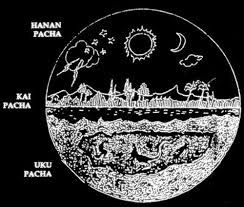
Uku Pacha: The underworld, a place associated with death, but not necessarily evil. It was ruled by Supay, the god of death, but also connected to the earth’s life-giving forces like water and the spirits of ancestors.
These three worlds were interconnected and influenced each other. Mountains were seen as bridges between worlds. Certain rituals kept balance and harmony among them.
Pachamama Celebrations Nowadays
Unlike the crude celebrations Incas used to present, the Pachamama ceremony consists of domestic and simple rituals. For example, before drinking alcohol, or chicha, locals pour some of their drinks into the soil offering the first drink sip to the Pachamama.
The main ritual is a beautiful tradition where people dig a hole in the ground; this act represents the mouth of Pachamama. Inside the hole, they place a clay pot filled with offerings such as food, fruits, seeds, peanuts, coca leaves, and medicinal plants, plus some crafts.
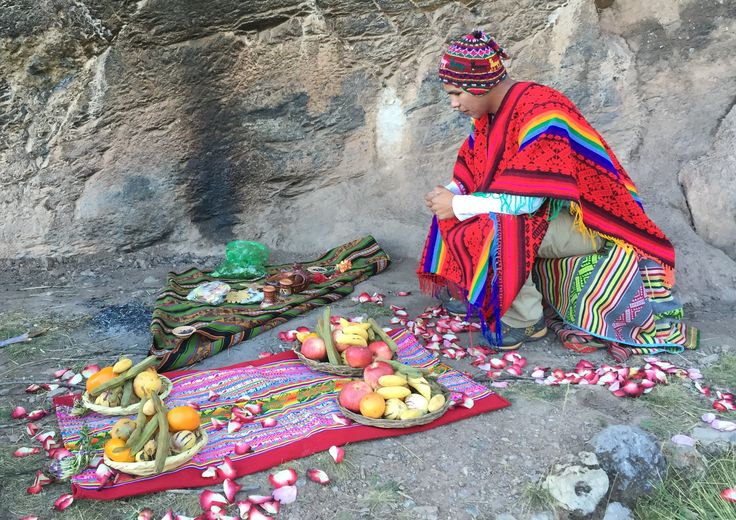
Before they dig, community leaders, often the wise elders, ask our ancestors and the local spirits for permission. This respectful step helps us create a special connection with the Earth. Afterward, they bury the offerings and create a mound of stones and flowers, which becomes the ceremonial center.
Once the ritual is complete, the community thanks Mother Earth for the good weather, animals, and crops. Leaders demand protection for the coming year, abundant resources, and the well-being, joy, and love of their families. Daily imbalances disrupt our lives, but the Sacred Ceremony counteracts and restores balance.
The Inca ceremonies are prepared by Queros Altomisayoc, learned shamans, healers of the Andes, respected in Peru. They also cure ailments of unknown origin and save the patients from any harm and negative energy. This is a very ancient and transcendental Inca wisdom that we know how to preserve. We now share it for your great benefit.
“Payment to the Earth“
Many followers of Pachamama still honor their traditions by sacrificing guinea pigs, although this practice has become quite rare. Similarly, burning llama fetuses is not commonly seen. One of the most important rituals is the Challa, or “Payment,” which takes place throughout August.
The devotion to Pachamama has also spread beyond Andean culture and found a place in the New Age movement. Sundays are special days for weekly rituals, and many worshippers create lovely temples with bowls of dirt to represent Pachamama as Mother Earth.
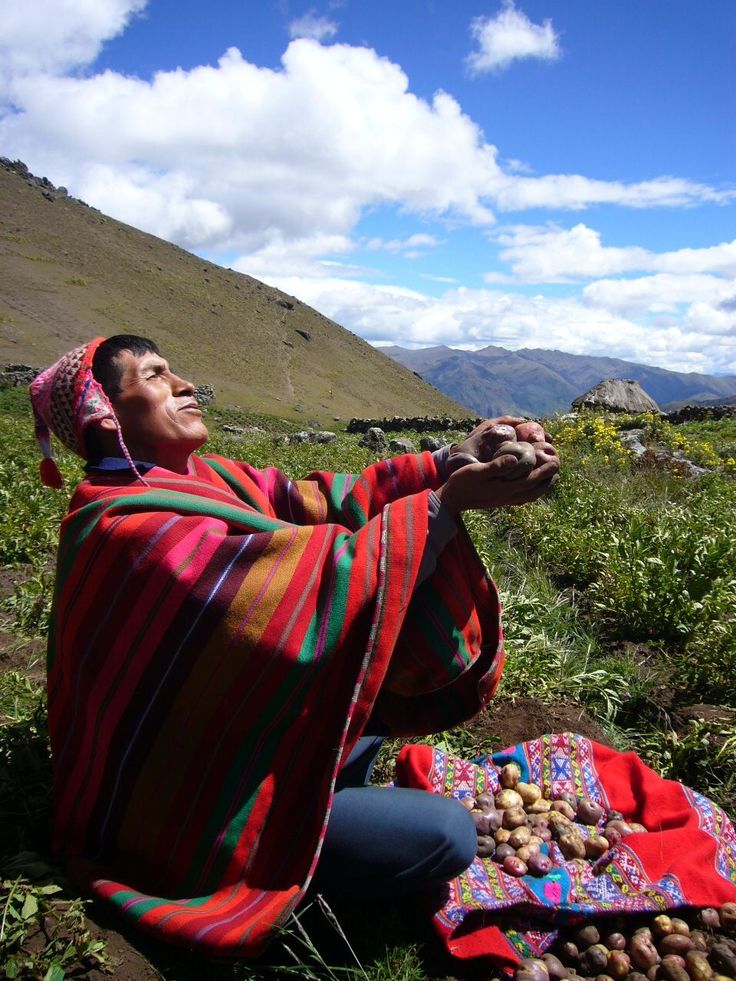
As you see, Peru has a different world when we talk about ancient traditions, so we feel proud to keep the legacy of our ancestors and let the world know more about it. If you’re interested to know about this and other important celebrations held in Peru, we encourage you to contact our consultants. Our team will make your dreams in Peru come true!
Viagens Machu Picchu, journeys that inspire, moments that last.
| Spanish > Viagens Machu Picchu |
| English >Viagens Machu Picchu |
| Portuguese > Viagens Machu Picchu |

